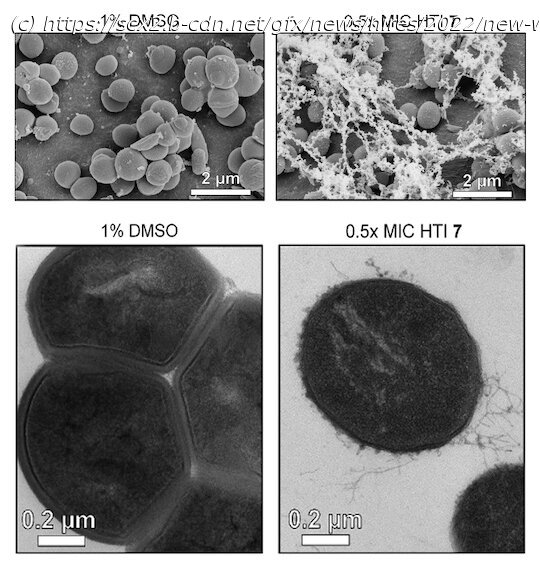A new class of motorized molecules that kill specific bacteria shows promise to curb the threat of antibiotic resistance to human health.
August 25, 2022
A new class of motorized molecules that kill specific bacteria shows promise to curb the threat of antibiotic resistance to human health.
Rice University scientists led a team developing light-activated hemithioindigo (HTI) molecules that destroy Gram-positive bacteria and the biofilms they form. The molecules do so by enhancing the local generation of reactive oxygen species (ROS) that chemically attack and destroy drug-resistant cells.
The new molecules differ from, and are complementary to, others created at Rice that are also activated by light but drill into cell membranes to kill them.
Like the drills based on Nobel Prize-winning work by Bernard Feringa, the HTI-based molecules are activated by visible light rather than harmful ultraviolet radiation.
Both are products of Rice chemist James Tour and his colleagues. Rice alumni Ana Santos, a postdoctoral global fellow at the Health Research Institute of the Balearic Islands in Palma, Spain, and Alexis van Venrooy, now a senior scientist at Genesis Therapeutics, San Diego, are co-lead authors of the new study in Advanced Science.
The HTI-based molecular machines consist of two halves: a thioindigo unit linked to a carbocycle via a central carbon double bond. When triggered by visible light, the molecule undergoes a conformational change that results in either a drill-like 360-degree motion or a shift between two conformations, like an “on/off” switch, depending on the molecular design.






